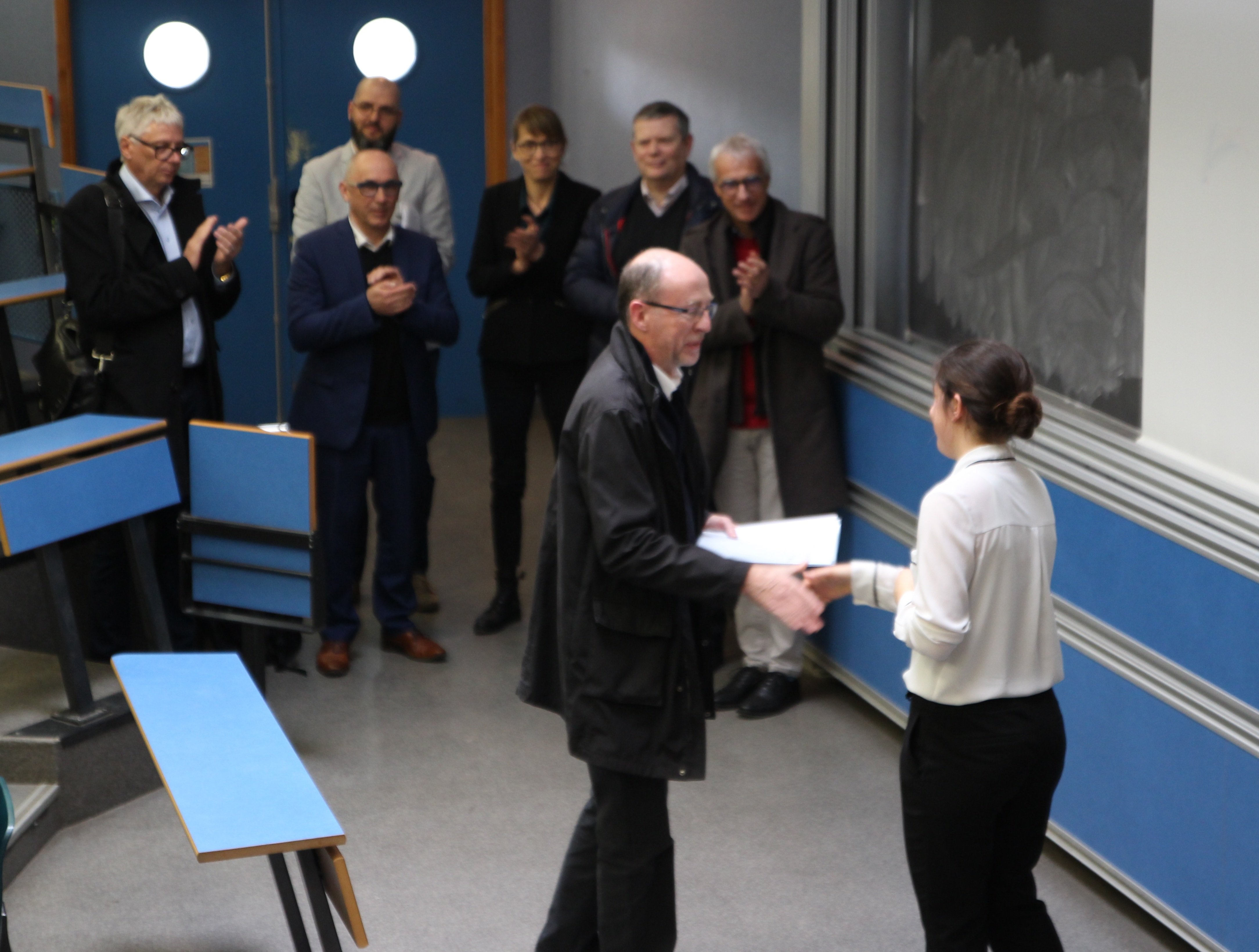Phd Caroline STACKLER
“Electronic transformers for railway applications”


Abstract
Current on-board converters, running on AC catenaries, are mainly composed by a low frequency transformer, then rectifiers, supplying traction motors through three-phase inverters. Due to volume and mass constraints on the converter, the efficiency of the transformer is limited. Moreover, this transformer is quite bulky and heavy.
Thanks to the development of high voltage and high power semiconductors, such as Si IGBTs or SiC MOSFETs, and of medium frequency transformer, i.e. operating at a few kilohertz, new topologies of on-board converters, named Power Electronic Traction Transformer (PETT), are studied.
Though several structures have been studied in the literature, they have never been compared. The main objective of this thesis is, thus, to develop a methodology to size PETT topologies, in order to compare them.
In the first chapter, a state of the art of the PETT structures proposed in literature is presented.
The second chapter is dedicated to the comparison of indirect topologies. A methodology, optimizing the sizing of each structure to maximise its efficiency under mass and volume constraints, is developed. It is applied on topologies using SiC MOSFETs, contrary to Si IGBT structures developed in the literature. The magnetizing inductance is also considered to insure soft switching and reduce the losses.
In the third chapter, an novel active filter, included in the DC-DCs of the converter, is proposed. The aim is to reduce the volume of the filtering capacitors on the intermediate buses, and thus, of the entire converter, without impacting the intrinsic reliability of the converter. Its impact on the losses of the DC-DC is studied.
The last chapter deals with the interactions between the on-board converter and the infrastructure. Thus, the 25 kV-50 Hz railway network is modeled. It includes a novel circuit, modelling the skin effect in the catenary. Some resonances, dependent on the sector geometry and the train position, are highlighted in the impedance seen by a train. Moreover, the models are implemented in a numerical simulator to supply a small scale mock-up of a PETT. PHIL tests have, a priori, never been carried on a PETT.
A conclusion and some perspectives of future work close this dissertation.
Keywords: Power Electronic Traction Transformer (PETT), sizing methodology, SiC MOSFET, railway infrastructure, harmonic interaction
Thesis director: Philippe Ladoux


